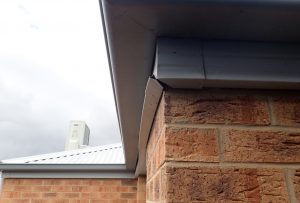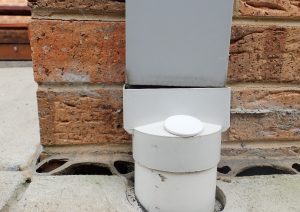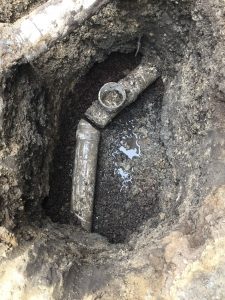28 Sep Distressed Houses and Home Insurance Claims
IMPORTANT CLAIMS HANDLING UPDATE
Any blog post in the Metropolis Solutions Blog Archive that includes any direct or indirect reference to insurance claims handling of any nature whatsoever, including any reference to existing and/or potential claims, was posted prior to 01.07.21, is for general information only and may also no longer be applicable due to recent changes in Federal Financial Services laws concerning claims handling. Please note that Metropolis does not hold an Australian Financial Services (AFS) Licence for claims handling and therefore qualified expert assistance on any insurance related matter, including Victorian Plumbers Warranty, should now be sought from a suitable lawyer or other expert holding an AFS claims handling licence. Metropolis Solutions can still consult on insurance claims handling matters, but only in the instance where we are directly engaged to do so by your authorised legal representative.
Unfortunately many home owners find themselves in the horrible predicament of having their dream home start to crack and show signs of what the construction industry bundles up as ‘structural distress’.
Typical problems include cracked brick work, interior plaster, doors hard to open or close, uneven floors, cracked tiles and so on. More significant problems can include warping and tilting of brick walls, separation (or crushing) of expansion joints, along with the opening of large gaps around windows and doors.
These problems can affect homes of any age, including brand new ones along with those which have extensions. If the builder denies any responsibility or the house is outside of warranty, where can you go??
Photo (above) shows warped wall and fascia due to structural distress caused by plumbing leaks.
Whilst there can be a range of causes for building cracking, surprisingly, if a plumbing cause can be confirmed by forensic investigation, it may be quite possible in many situations for the home owner to make a successful claim on their Building (Home) Insurer. It also does not generally matter how old the house is.
Photo (above) shows how the house and paving have separated. The down pipe has also lifted from the connector to the storm water system (and will be leaking), further adding to the water saturation issues around the foundations of the house. All of this was entirely due to underground plumbing defects which caused major leaks.
Home insurance policies can often (but not always – each case is unique) respond to such damage on the basis that they typically cover ‘defined events’ such as fire, storm and so on – the bursting or leaking of pipes is typically another defined event. Accidental Damage policies add another layer of protection and basically cover damage caused by any means unless it is specifically excluded for some reason.
Typical plumbing related circumstances where a home building insurance policy might cover the cost of fixing the damage caused (but almost always fixing the actual cause of the problem) would include these situations:
- A sewer pipe has been left unjoined (due to defective work by the original plumber) during construction of the house and has therefore been leaking since the home was first occupied, however it only leaks for a while each time a toilet is flushed. When the house starts to visibly crack 7 years later and the cause is investigated and found, if an engineer can relate the home damage to the leak, the home insurer may agree to pay to fix the damage caused to the house.
- During the house construction, the storm water pipes were not fitted with flexible movement couplings as required by Australian Standards. Over the years, the soil on the site has swollen and dried out due to normal moisture fluctuations, but the house has been able to cope this this ‘normal’ variation without any problems. Eventually however, the soil expansion and contraction becomes too much for the storm water pipes trapped in the soil, which would normally have also been fine if they had been fitted with the movement tolerant couplings. Under stress, the pipes crack and then start leaking into the surrounding soils. This is a significant problem because storm water pipes carry a lot of water on a regular basis. This significant and uncontrolled change of moisture content in turn causes structural distress in the house either by increased expansion of the soil, or in come cases by collapse of the load bearing capacity of the soil.
Photo Above: The storm water pipes at this clients house had completely sheared off due to stresses in the soil, causing extensive heaving to the surrounding soils. No flexible movement tolerant couplings had been used, even though they were specified by the geotechnical engineers before the house was constructed.
As mentioned, each case is different, however a plumbing origin is common in many cases of slab heave and also where buildings have experienced the rapid onset of distress.
In many cases of supposed slab failure, the actual cause is in fact something with a plumbing origin; basically a “Chicken Or The Egg” situation and many lawyers unfortunately seem to think the cause must be what you can see (the slab) rather than what you cannot see (the plumbing underneath the slab). Anybody in this situation must always investigate the potential plumbing cause.
Any home owner faced with such a problem should engage a capable Forensic Plumber such as Metropolis to check the entire plumbing system for problems. It is not enough to just check water pressure or look for obvious leaks; most of the problems Metropolis finds are buried deep underground and can only be found by experts using top quality equipment. Some leaks and problems also just can’t be found without more specialist work such as block testing.
If the home building insurer accepts a claim for building distress from a plumbing cause, they will also pay the associated rectification costs including things such as:
- engineering experts to devise the correct means of fixing the house
- major structural work including under pinning or expansion products
- slab repairs and replacement
- exterior wall damage e.g cracking in bricks and render
- interior plaster and paint / cosmetic damage
- floor and wall tile replacement and so on
Additional benefits also apply in some situations when making a claim on your home building insurer. Those benefits include temporary accommodation if needed during repairs, or if your house becomes unsafe to live in. Most insurance policies will also cover at least some of the investigation costs of a suitable expert to locate the cause of the problem.
These sorts of claims should be looked at no differently to other claims such as fires, impact from trees, storm damage and so on. They are all potentially covered by your Home & Contents insurer – and that’s why you have that insurance, so don’t overlook it in a situation like this, particularly if the house is out of any builders or plumbers warranty.
Obviously, and like all Metropolis blogs, this is general information only and each situation is unique. Causes vary as do insurance policies. With many decades of both plumbing and insurance expertise though, Metropolis can provide you with the expert answers and professional assistance to allow you to make an informed decision.




Sorry, the comment form is closed at this time.